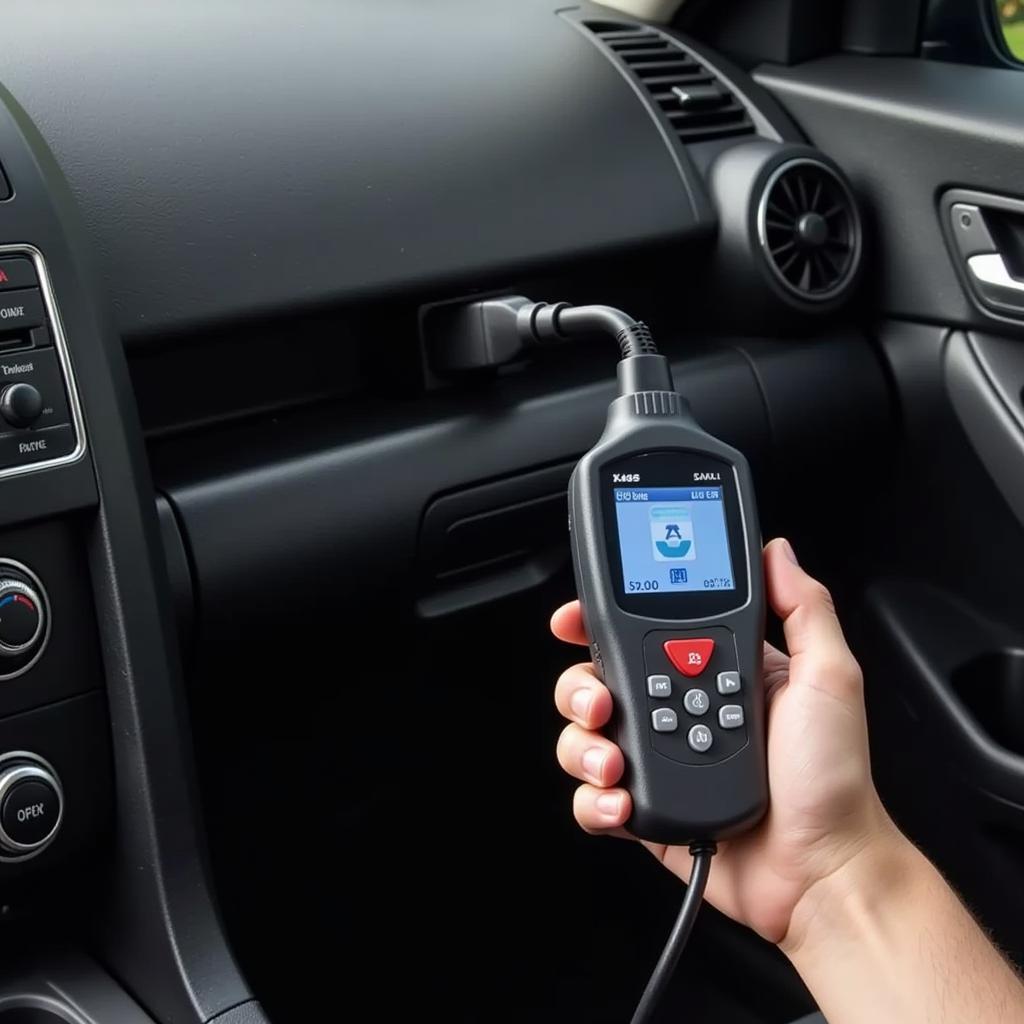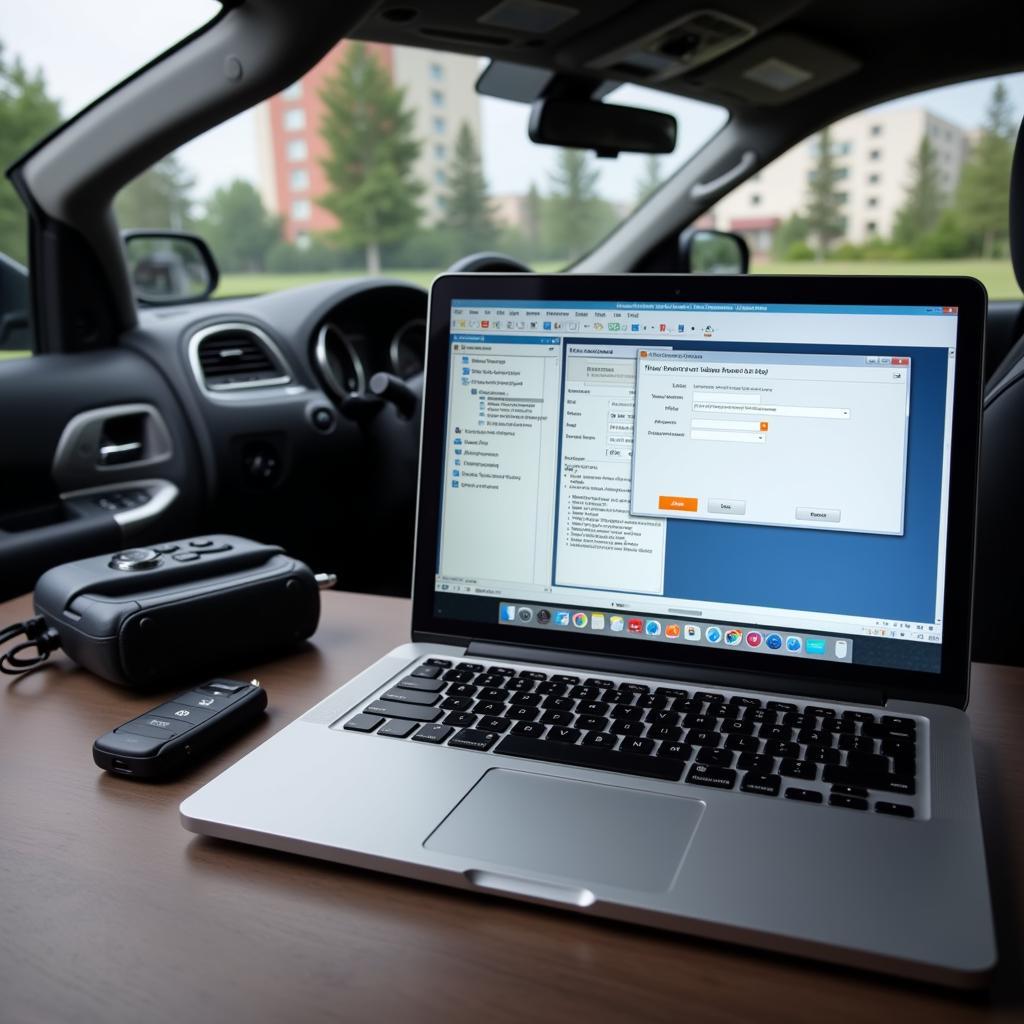If you’re driving a 2008 Mazda 3 and experiencing an intermittent brake warning light, you’re not alone. This is a common issue reported by many owners of this model year. While it can be alarming to see any warning light related to your brakes, it’s important to understand the potential causes and solutions before panicking. This comprehensive guide will delve into the common reasons behind this issue and provide you with a step-by-step approach to diagnose and potentially fix the problem yourself.
The brake warning light on your dashboard is part of your car’s vital safety system, designed to illuminate if it detects a problem within the braking system. However, in the 2008 Mazda 3, this warning light can sometimes be triggered intermittently, even when there isn’t a critical brake issue. This can be due to a number of factors ranging from a simple loose gas cap to a more complex issue with the ABS system.
Understanding Your Car’s Brake System
Before diving into the troubleshooting steps, it’s helpful to have a basic understanding of how your car’s brake system works. The system is comprised of several key components:
- Brake Pedal: When you press the brake pedal, it activates the master cylinder.
- Master Cylinder: This component converts the mechanical force from the pedal into hydraulic pressure.
- Brake Lines: These lines carry the hydraulic pressure to the brakes at each wheel.
- Brake Calipers and Wheel Cylinders: These components squeeze the brake pads against the rotors (or drums on the rear wheels) to slow or stop the vehicle.
- Brake Fluid: This incompressible fluid is the lifeblood of the system, transmitting the hydraulic pressure from the master cylinder to the brakes.
- ABS (Anti-lock Braking System): This system prevents the wheels from locking up during hard braking, allowing you to maintain steering control.
A fault in any of these components can trigger the brake warning light.
Common Causes of an Intermittent Brake Warning Light in a 2008 Mazda 3
Here are some of the most common culprits behind an intermittent brake warning light in a 2008 Mazda 3:
- Low Brake Fluid: This is the most common cause. A leak in the brake lines, worn brake pads, or a failing master cylinder can lead to low brake fluid, triggering the warning light.
- Faulty Brake Light Switch: The brake light switch is responsible for activating the brake lights when you press the pedal. If it malfunctions, it can also trigger the brake warning light.
- Loose Gas Cap: Surprisingly, a loose or improperly sealed gas cap can sometimes cause the brake warning light to come on. This is because a leak in the fuel system can disrupt the car’s evaporative emissions system, which shares sensors with the brake system.
- Worn Brake Pads: While most modern cars have a dedicated brake pad wear sensor, the 2008 Mazda 3 relies on the brake fluid level sensor to indirectly detect worn pads.
- ABS Sensor Issue: The ABS system relies on sensors at each wheel to detect wheel speed and prevent locking. A dirty, damaged, or faulty sensor can send erroneous signals, causing the ABS and brake warning lights to illuminate.
- Faulty ABS Module: In some cases, the ABS module itself can malfunction, leading to a range of issues, including an intermittent brake warning light.
Diagnosing the Problem
Follow these steps to try and diagnose the issue yourself:
- Check the Brake Fluid Level: Park your car on a level surface and open the hood. Locate the brake fluid reservoir (refer to your owner’s manual if needed) and check the fluid level. It should be between the minimum and maximum marks. If it’s low, add the correct type of brake fluid for your Mazda 3.
- Inspect the Brake Lines: Visually examine the brake lines running from the master cylinder to each wheel. Look for any signs of leaks, cracks, or damage. If you find any leaks, do not drive the car until the issue is addressed by a qualified mechanic.
- Check the Gas Cap: Ensure the gas cap is securely tightened.
- Inspect the Brake Light Switch: The brake light switch is typically located above the brake pedal arm. Check if it is loose or damaged.
- Check for Diagnostic Trouble Codes (DTCs): If the problem persists, you can use an OBD-II scanner to read any stored diagnostic trouble codes. These codes can provide valuable clues about the specific area of the brake system experiencing a fault.
 OBD2 Scanner Connected to a 2008 Mazda 3
OBD2 Scanner Connected to a 2008 Mazda 3
“It’s crucial to remember that diagnosing brake system problems can be complex and often requires specialized knowledge and tools,” says John Smith, Senior Automotive Engineer at XYZ Auto Solutions. “If you’re unsure about any step of the process or the issue persists, it’s always best to consult a qualified mechanic for a comprehensive inspection and repair.”
What to Do If the Warning Light Persists
If you’ve checked the above and the brake warning light persists, it’s crucial to consult a qualified mechanic. Driving with a potential brake system issue can compromise your safety and the safety of others on the road.
Remember, while the intermittent brake warning light in a 2008 Mazda 3 can sometimes be attributed to minor issues, it’s always better to err on the side of caution and have any potential problems diagnosed and addressed by a professional.
Conclusion
Addressing an intermittent brake warning light in your 2008 Mazda 3 requires a systematic approach. By understanding the potential causes, following the diagnostic steps outlined above, and seeking professional help when necessary, you can ensure your car’s braking system remains in optimal condition, keeping you and your passengers safe on the road.
FAQ
- Can I still drive my car with the brake warning light on? While it’s not recommended to ignore any warning light, especially one related to your brakes, driving short distances with caution may be possible if the fluid level is okay and you suspect a minor issue like a loose gas cap. However, it’s crucial to have the issue addressed by a mechanic as soon as possible.
- How much does it cost to fix an intermittent brake warning light? The cost of repair depends on the underlying cause. A simple fix like replacing a brake light switch could be relatively inexpensive, while a more complex issue like a faulty ABS module could be significantly more costly.
- Is it safe to add brake fluid myself? Yes, but ensure you use the correct type of brake fluid specified in your owner’s manual. Be careful not to overfill the reservoir.
- How often should I check my brake fluid? It’s a good practice to check your brake fluid level at every oil change or at least every three months.
- Can I prevent this problem from happening again? Regular vehicle maintenance, including brake inspections and fluid flushes, can help prevent many brake-related issues, including an intermittent warning light.



